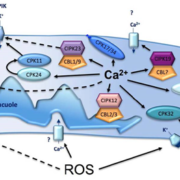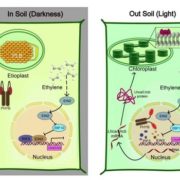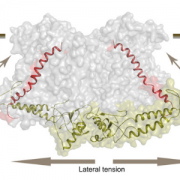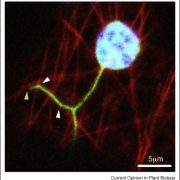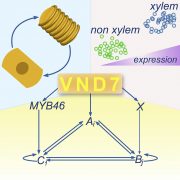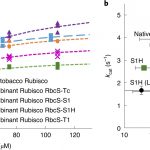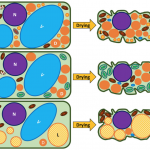Review: Biomolecular condensates in photosynthesis and metabolism ($) (Curr. Opin. Plant Biol.)
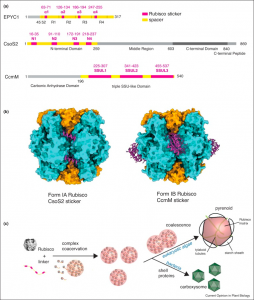 Biomolecular condensates are membraneless organelles with the capacity to spatially concentrate biomolecules. Liquid-liquid phase separation (LLPS) is one mechanism of condensate formation in which demixing of macromolecules leads to separation into dense and light phases. Photosynthetic organisms like cyanobacteria and green algae also form CO2-fixing compartments as biomolecular condensates through LLPS. In this paper, Wunder et al. review the role of LLPS in the formation of Rubisco-containing condensates. The authors highlight the formation of Rubisco complexes like carboxysomes in proteobacteria and pyrenoids in microalgae, and their role in increasing the enzyme efficiency and specificity of CO2 assimilation. In addition, the authors discuss how the highly rigid cuboid structure of Rubisco complexes favors multivalent interactions for condensate formation. The authors also review the structure of three Rubisco-linking scaffold proteins, their stickers and spacer regions and their role in condensate formation. Overall, the authors provide an insight to the importance of condensates in metabolic channeling and focus on enhancing knowledge on the spatiotemporal regulation of condensate formation for future use in synthetic biology. (Summary by Sunita Pathak @psunita980) Curr. Opin. Plant Biol. 10.1016/j.pbi.2020.08.006
Biomolecular condensates are membraneless organelles with the capacity to spatially concentrate biomolecules. Liquid-liquid phase separation (LLPS) is one mechanism of condensate formation in which demixing of macromolecules leads to separation into dense and light phases. Photosynthetic organisms like cyanobacteria and green algae also form CO2-fixing compartments as biomolecular condensates through LLPS. In this paper, Wunder et al. review the role of LLPS in the formation of Rubisco-containing condensates. The authors highlight the formation of Rubisco complexes like carboxysomes in proteobacteria and pyrenoids in microalgae, and their role in increasing the enzyme efficiency and specificity of CO2 assimilation. In addition, the authors discuss how the highly rigid cuboid structure of Rubisco complexes favors multivalent interactions for condensate formation. The authors also review the structure of three Rubisco-linking scaffold proteins, their stickers and spacer regions and their role in condensate formation. Overall, the authors provide an insight to the importance of condensates in metabolic channeling and focus on enhancing knowledge on the spatiotemporal regulation of condensate formation for future use in synthetic biology. (Summary by Sunita Pathak @psunita980) Curr. Opin. Plant Biol. 10.1016/j.pbi.2020.08.006


